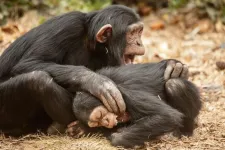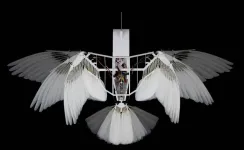(Press-News.org) DETROIT — A new program supported by a four-year, $749,991 grant from the National Institute of Food and Agriculture of the United States Department of Agriculture (USDA) will use data to study the future of agriculture and train students to better understand how to keep people fed in an ever-changing world.
The project, “Nonformal Training of Michigan Youth on Intersection of Agriculture and Data Science,” will be led by Sara Masoud, Ph.D., assistant professor of industrial and systems engineering in Wayne State University’s College of Engineering.
Agriculture experts say that arable land per person is projected to decrease by two-thirds of the current available capacity by 2050. This drastic reduction is associated with climate change, reduction in freshwater supply and population growth. Smart agriculture has proven to be highly productive, water and land-efficient, and protective of the environment. Thus, it may play a crucial role in climate-resilient food production.
“There are significant concerns that we may not be producing enough food to meet future global demands,” said Masoud. “Smart agriculture is a promising solution to global food production challenges, especially as land becomes scarce. Innovative methods like vertical farming and urban gardens, combined with technologies such as sensors, drones, and AI, can improve resource efficiency and yields. However, its widespread adoption is limited due to cost and skill gaps. Expanding its use requires education that equips the workforce with knowledge in both smart farming tools and data science, which is increasingly essential for optimizing agricultural practices and addressing future challenges.”
The project proposes an experiential learning program to expose and attract youth to smart agriculture, provide hands-on experiential learning regarding smart agriculture, and align industry and academic partnerships. This project will familiarize 200 Michigan middle and high school students with data science and artificial intelligence in agriculture.
“Our plan is to run a summer camp featuring focused on indoor and outdoor farming, sensors and sensor networks, data collection and processing, and machine learning and artificial intelligence,” said Masoud. “The camp will include classroom sessions followed by hands-on activities such as planting, working with sensors, coding to develop predictive models, and more. Additionally, students will have the opportunity to tour local smart agriculture facilities.”
“This program will give young students an opportunity to learn more about areas of science that they may not have considered as a future career,” said Ezemenari M. Obasi, Ph.D., vice president for research & innovation at Wayne State University. “It is an excellent example of how Wayne State University faculty are cultivating the next generation of innovators by creating new knowledge that combines sustainable practices and technology to tackle a global challenge.”
The award number for this grant from the USDA’s National Institute of Food and Agriculture is 2024-67037-42800.
# # #
About Wayne State University
Wayne State University is one of the nation’s pre-eminent public research universities in an urban setting. Through its multidisciplinary approach to research and education, and its ongoing collaboration with government, industry and other institutions, the university seeks to enhance economic growth and improve the quality of life in the city of Detroit, state of Michigan and throughout the world. For more information about research at Wayne State University, visit research.wayne.edu.
Wayne State University’s research efforts are dedicated to a prosperity agenda that betters the lives of our students, supports our faculty in pushing the boundaries of knowledge and innovation further, and strengthens the bonds that interconnect Wayne State and our community. To learn more about Wayne State University’s prosperity agenda, visit president.wayne.edu/prosperity-agenda.
END
Wayne State University to lead USDA grant to support program training students in ‘smart agriculture’
2024-11-20
ELSE PRESS RELEASES FROM THIS DATE:
Low-dose oral minoxidil initiation for patients with hair loss an international modified Delphi consensus statement
2024-11-20
Hair loss significantly impacts patients’ quality of life, and it may be nonscarring or scarring. Etiologically, hair loss may be hereditary (androgenetic alopecia [AGA]); related to age; congenital (hair shaft disorders); traction induced; inflammatory (primary scarring alopecia); autoimmune (alopecia areata); or secondary to medical, surgical, or emotional stressors (telogen effluvium), infection (tinea capitis), and certain medica- tions including cancer therapies.
Topical minoxidil is approved by the US Food and Drug Admin- istration (FDA) as an over-the-counter drug designed to treat male pa- tients with AGA (minoxidil, 5% ...
Turning carbon emissions into methane fuel
2024-11-20
COLUMBUS, Ohio – Chemists have developed a novel way to capture and convert carbon dioxide into methane, suggesting that future gas emissions could be converted into an alternative fuel using electricity from renewable sources.
Carbon dioxide (CO2) is a greenhouse gas that accounts for a large part of Earth’s warming climate, and is produced by power plants, factories and various forms of transportation. Typical carbon capture systems aimed at reducing its presence in the atmosphere work to lower carbon dioxide emissions by isolating CO2 from other gases and converting it to useful products. However, this process is difficult to implement on an industrial scale due to the ...
Friendly social behaviors are contagious for chimpanzees
2024-11-20
Chimpanzees are more likely to engage in play or groom each other if they see others performing these social behaviors first, Georgia Sandars and colleagues at Durham University, U.K. report in a study publishing November 20, 2024 in the open-access journal PLOS ONE.
Whether it’s yawning or keeping watch for predators, many animals — including primates and ravens — find certain behaviors contagious: after seeing another member of their group performing one of these behaviors, they will instinctively perform it too. This ‘behavioral contagion’ is thought to help animal groups reinforce their social bonds and stay in sync. ...
Who is most vulnerable to commercial sexual exploitation?
2024-11-20
Educational achievement, mental health diagnoses, childhood abuse, number of arrests and number of children all play a complex role in shaping a person’s vulnerability to commercial sexual exploitation, how long they are exploited for and how difficult it is to get out. That is one conclusion of a new study published November 20, 2024 in the open-access journal PLOS ONE by Courtney Furlong and Ben Hinnant of Auburn University, U.S.
Commercial sexual exploitation (CSE) occurs when anything of value is given in exchange for a sex act. When CSE involves force, fraud, or coercion, it is termed ...
Florida manatees flourish and flounder alongside human neighbors
2024-11-20
Florida manatees are threatened by human activity, but they’re also doing better than ever, according to a study examining manatee populations since 12,000 BC, published November 20, 2024 in the open-access journal PLOS ONE by Thomas J. Pluckhahn of the University of South Florida and David K. Thulman of George Washington University, Washington DC, U.S.
Florida manatees are an iconic species and also a conservation concern, threatened by environmental change and watercraft collisions. Historical manatee populations are poorly understood, and therefore little is known about the state of manatees before modern human influence, making it difficult for conservationists ...
Manatees might be relatively recent arrivals to Florida, USF study finds
2024-11-20
TAMPA, Fla. (Nov. 20, 2024) – New research suggests that while manatees are an indelible part of Florida’s seascape, they might also be relatively new residents in the Sunshine State.
The findings are detailed in a study co-authored by University of South Florida anthropologist Thomas Pluckhahn and David Thulman, an archaeology professor at George Washington University, and scheduled to publish in PLOS ONE on Nov. 20 at 2 p.m. The embargo will lift at that time.
The paper, “Historical ...
New Durham University study shows friendly social behaviors are contagious for chimpanzees
2024-11-20
-With images and videos-
Researchers from Durham University have uncovered new insights into social contagion in chimpanzees, revealing that these primates are capable of catching friendly behaviours, which may strengthen social bonds and increase group harmony.
The study, conducted at the Chimfunshi Wildlife Orphanage in Zambia, observed two affiliative behaviours—grooming and play—and found that these behaviours can spread among group members in a way that promotes group cohesion.
This groundbreaking study has been published in the journal PLOS ONE, which expands our understanding ...
Megapixel fluorescence microscopy through scattering layers made simple
2024-11-20
A team from The Hebrew University of Jerusalem has introduced a new method for megapixel-scale fluorescence microscopy through complex scattering media. This approach resolves high-resolution images from several tens of widefield fluorescence-microscope frames without requiring specialized equipment such as spatial-light modulators or intensive computational processing. By efficiently correcting distortions caused by light scattering, the technique allows for clear imaging of dense and challenging targets. Its compatibility with conventional microscopy setups, coupled with the use of established matrix-based techniques, makes it practical for widespread use.
A recent ...
Over 4 million US adults with chronic liver disease can be grouped into unique risk groups based on barriers to care
2024-11-20
People with chronic liver disease can be categorized into four distinct risk groups based on the different barriers they face in obtaining outpatient care, barriers that increase their odds of requiring hospitalization, a new UCLA study finds.
The findings, to be published November 20 in the peer-reviewed PLOS ONE, point to the need for interventions aimed at reducing possibly avoidable hospitalizations among the highest-risk people with chronic liver disease (CLD). Previous research has found that people with CLD on average need more hospital-based care than those with other chronic diseases.
About ...
Robot flies like a bird
2024-11-20
Have you ever wondered why an airplane has a vertical tailfin? The plane needs it to stabilize its flight. Since flying without a vertical tail is much more energy-efficient, the aviation industry has worked hard to accomplish this – so far without much success. However, birds don’t need a vertical fin, which raises the question: how do they do it?
David Lentink, Professor of Biomimetics at the University of Groningen, has developed a robotic bird model with real pigeon feathers to show how they do it. In previous work, he found that birds continuously ...



